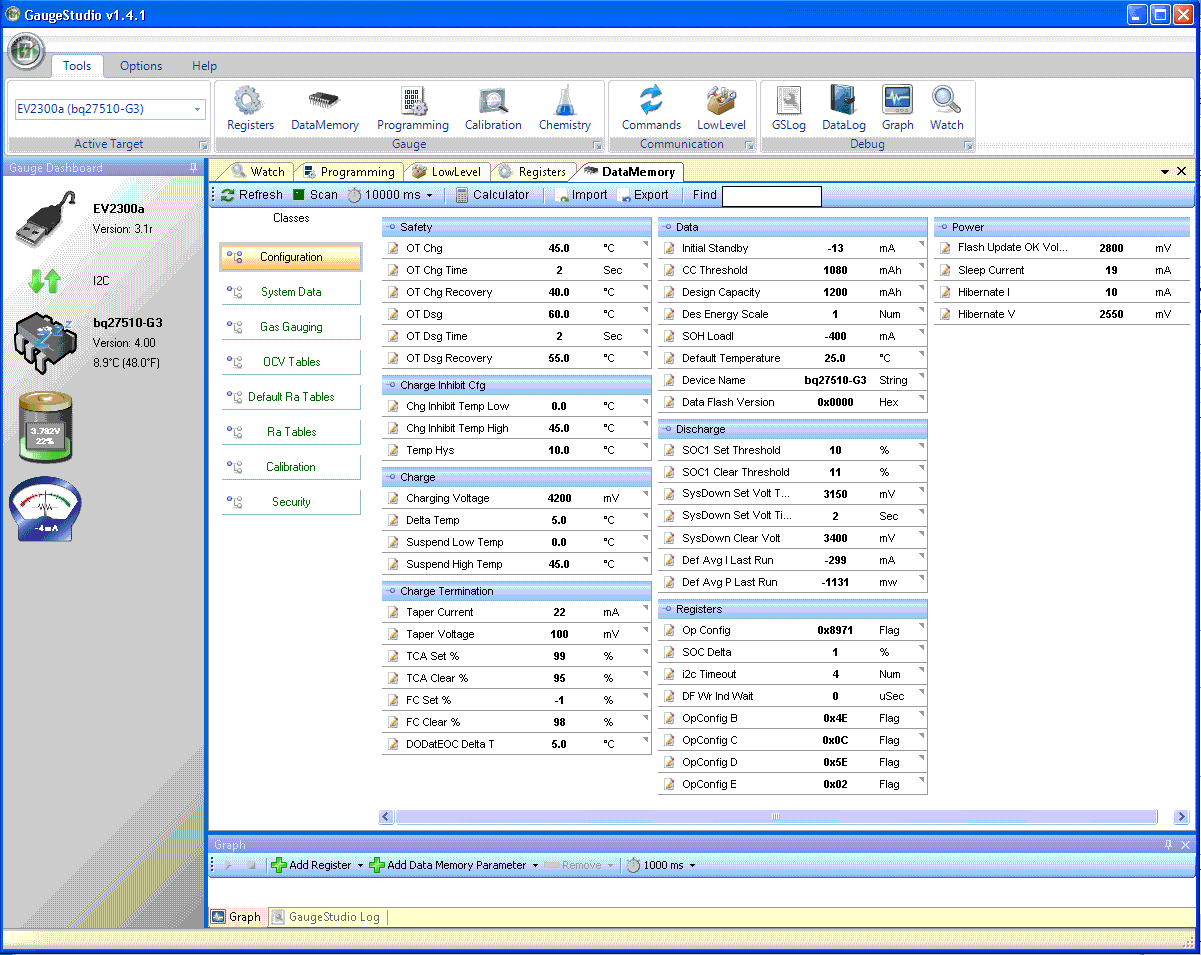I'm looking to use the bQ27510-g3 in a design in which the target circuit spends a lot of time in a low power state. When this occurs, I need the gas gauge to still accurately report the battery.
My understanding of the bq27510-g3 is that below a certain current (quit current) the part enters a "relaxation" mode and primarily uses the battery voltage rather than coulomb counting. However, in my tests to date this doesn't seem to happen and the battery capacity keeps ticking down at a higher rate.
I have a test board that is hooked up to Gauge Studio and the current drawn by the circuit is around 100uA (the lowest current the gauge seemed to be able to report is 3mA). Below are some screenshots of the gauge readings 24 hours apart and also the configuration / parameter pages. Note the Capacity has gone from 22% to 18% whereas the battery Voltage has only dropped 1mV. If I disconnect the battery and reconnect, I go back to 22%.
I'm sure there's something simple I haven't done here, can someone point me in the right direction?







